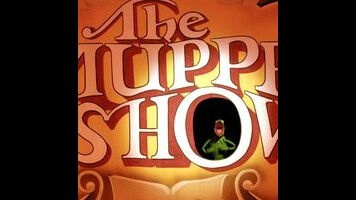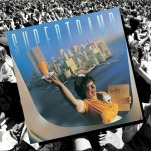The Muppet Show: “Episode 110: Harvey Korman”/“Episode 111: Lena Horne”

In the first of this week’s episodes of The Muppet Show, we glimpse what will become one of the series’ strongest (and most enduring) recurring themes: The reluctant guest star. We’ll see the prime example of this in John Cleese’s second-season appearance on the show, but it’s the late Harvey Korman who introduces the concept that the show-within-The Muppet Show isn’t necessarily the top priority for the stars of the day.
It’s an incredibly self-deprecating note for the series to hit, but it’s also one that hits the variety-show format right where it lives. Even today, a guest appearance on a variety show is most often used as a promotional tool; it’s the rare occasion that a Saturday Night Live host comes to 30 Rock without a new movie, TV show, or album to hock. Since the production cycle on The Muppet Show was longer than other programs of its ilk, the series was untethered from such topical/tacky concerns. Its writers were therefore free to turn out scripts that didn’t require the guests to smile through their song-and-dance routines. If the star-of-the-week was particularly gifted with comedic surliness, then they could be comedically surly on The Muppet Show, without concerns about box-office receipts or Nielsen ratings getting in the way of the humor. It’s a brilliant method of poking holes in the genial showbiz façade, one which receives a big ol’ nod during the third act of The Muppets. Sometimes the characters just need to dress visitors to The Muppet Theater in feathers to win them over to the Muppet way of doing things—other, more dire circumstances (like those presented in The Muppets) call for more persuasive techniques. Also, a few feet of rope.
Episode 110: Harvey Korman
“With our special guest star”: Of course, as a castmember on both The Danny Kaye Show and The Carol Burnett Show, Harvey Korman had been on the other side of the guest-regular player equation many times. It’s not much of a stretch to imagine that he’s channeling the spirits of many secretly uncooperative guests past on The Muppet Show, though his non-compliance comes from a very basic place: As Korman tells Kermit during the Talk Spot, he feels like a “token person” among The Muppets. The show’s ensemble calms this anxiety through a unique immersion therapy (with eerie echoes of Tod Browning’s Freaks), and Korman spends the rest of his time in The Muppet Theater in a chicken suit. His temporary transformation takes Korman out of the final third of the episode, but before his rendition of Muppet Like Me, Burnett’s “luminous second banana” finds a pair of foils in Miss Piggy and the surprisingly amenable behemoth Thog. In a foreshadowing of the Talk Spot, both Muppets get the upper hand on their guest.
“The most sensational, inspirational, celebrational”: That scene with Thog, “Maurice The Magnificent,” presents a showcase for Korman’s gifts with physical humor and blowhard indignation, casting the actor as a animal tamer who isn’t too far removed from Korman’s Blazing Saddles character, Hedley Lamarr. It’s not particularly surprising when Thog turns out to be a more gentle beast than Maurice claims, but the real humor of the scene is found in the ludicrous paces he puts his “master” through, requiring several stammering covers from Korman—as well as some brief ballroom dancing.
“It’s like a kind of torture to have to watch the show”: One bit of grouchy Korman that doesn’t land: His backstage blackout with Rowlf and Muppy. Was Korman a noted environmentalist, or is this just an excuse to slip a “pissing dog” joke into the middle of the show?
“It’s time to play the music”: The Electric Mayhem begins easing into its role as The Muppet Show’s house band here, earning a pair of musical performances—one played for laughs, the other played for show. The first, “Love Ya To Death,” is a Joe Raposo composition left over from the Sex And Violence pilot, with enough explosive metaphors and flashy pyrotechnics to account for both the “sex” and the “violence.” Yet, for all the mayhem with the Mayhem, the distinction for the episode’s most notable music number goes to Robin The Frog. Before being cast as Kermit’s wonderstruck nephew, the little green guy gets a touching solo spot with what would become his signature song, “Halfway Down The Stairs.” It’s a sweet, melancholy little ditty with lyrics by A.A. Milne, establishing Robin’s as one of the most insecure Muppets a whole season before the full formation of the character’s identity. The song itself would land in the U.K. Top 10 in 1977, an early example of The Muppet Show’s greater impact on pop culture.
“It’s time to raise the curtain”: The Electric Mayhem’s second segment—a Derek Scott instrumental entitled “Sweet Tooth Jam”—accounts for more of a “Look what we can do!” segment, with the members of the band flailing about most expressively. I have to wonder if that’s the natural energy of the performance, or if the footage wasn’t sped up a bit in the editing room. If not, it’s just another one of those moments to marvel at the abilities of the Muppet performers, and wonder about the physical toll of working on the show.
“It’s time to meet The Muppets”: As a testament to his abundant charisma—and maybe sensing the show was onto something with “Fever” from the Rita Moreno episode—Animal gives a Talk Spot-style interview to Kermit following “Love Ya To Death.” If “Fever” hadn’t completely established Animal as a bit of loose cannon, this segment certainly finishes the job, with Animal’s answers to Kermit rendered in head-butts to his snare drum and shouts of “Eat drums! Eat cymbals!” The unfettered id of The Muppet Show ensemble, Animal is an irreplaceable element of the series’ controlled chaos—as he demonstrates for Kermit by paradiddling on the frog at the mere suggestion of another drummer joining the cast.









![Rob Reiner's son booked for murder amid homicide investigation [Updated]](https://img.pastemagazine.com/wp-content/avuploads/2025/12/15131025/MixCollage-15-Dec-2025-01-10-PM-9121.jpg)

























![HBO teases new Euphoria, Larry David, and much more in 2026 sizzle reel [Updated]](https://img.pastemagazine.com/wp-content/avuploads/2025/12/12100344/MixCollage-12-Dec-2025-09-56-AM-9137.jpg)




